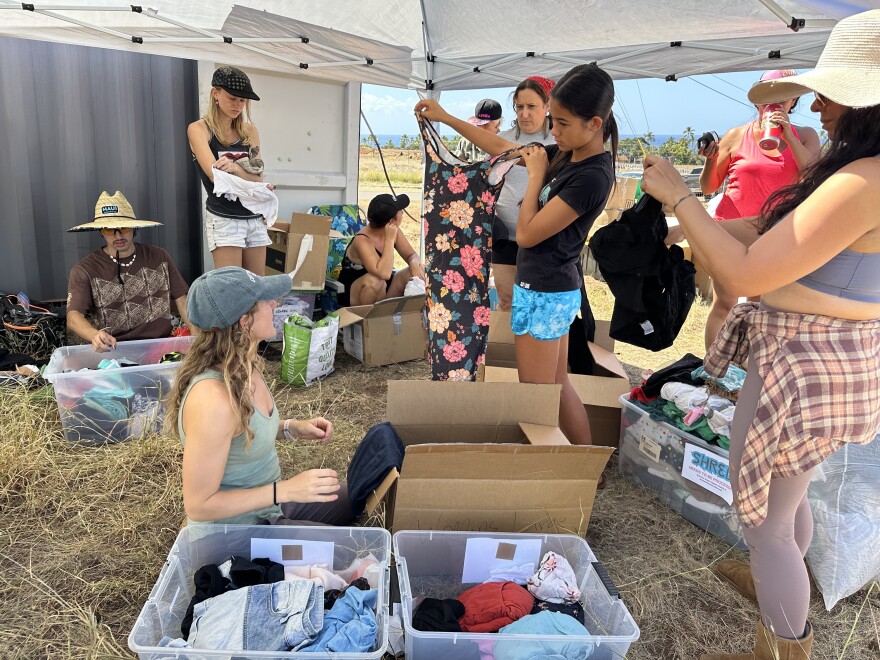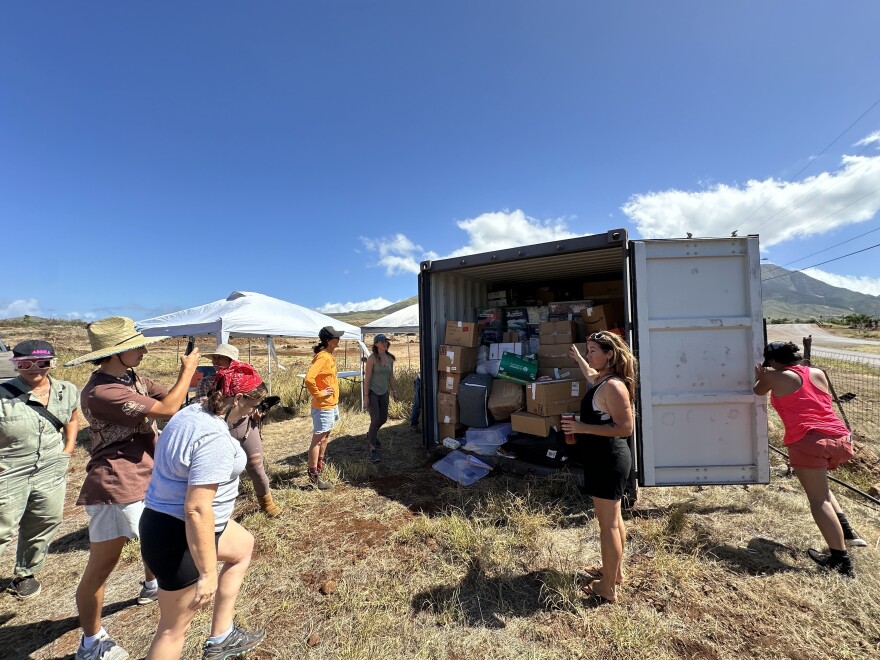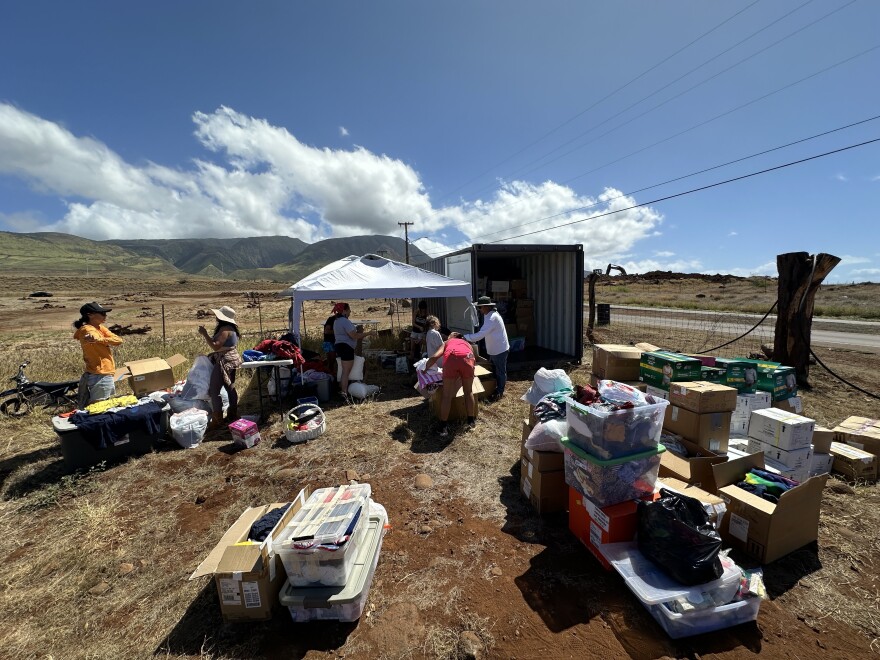About a dozen Maui residents are gathered in the shade of makeshift tents under Lahaina's hot sun. They're sorting hundreds of pounds of clothing from a 20-foot shipping container into various piles.
Volunteer Kiera Harder checks over a stack of shirts, pants and dresses, putting them in one of several bins.
“So as I'm going through these clothes, I am looking for, first of all, is it usable? So is it in good condition? Does it have a stain? Does it have a rip? Would somebody wear it again?” she explains.
Clothes in good condition will be gifted to targeted community partners for those in need.

“Whether it's the Keiki Exchange, local thrift shops, local churches, or people that were impacted by the fire that do need clothes,” Harder says. “We also work with the hospital and some other houseless organizations, so they will take some clothes as well for people coming from off the streets or coming from out of the hospital.”
Other fabrics are upcycled by crafters and transformed into new products. Non-wearable synthetic fibers are shredded.
“We take them to an industrial shredder, where we shred them up into little pieces, and then from there we can make them into new things, like pillows and dog beds,” she says.
These volunteers are members of Circular Hawaii, a group founded to address the island’s surplus of clothing and create a less wasteful local economy. Then the wildfires brought a flood of donations, many of which are still left unsorted in shipping containers and warehouses across Maui.
“I think it's the first thing that people think about. They're like, send clothes! Send clothes!” says West Maui resident and volunteer Gretchen Losano. “It wasn’t a negative thing, but it’s almost like, everyone wanted to help so much and so they were just offloading all the clothes, puka panties and all.”

Earlier in the morning, everyone gathered around, awaiting the first peek at the container’s contents as they creaked open its metal doors.
It’s overflowing with clothing and supplies — all donated after the fire over a year and a half ago.
For Nicole Huguenin, one of Circular Hawaii’s founders, the mission is critical.
“I can safely say all of this would have gone to the landfill,” she says, looking at the stacked boxes and bins of clothing.
Annually, more than 6,000 tons of textiles end up in the Maui Landfill, according to County of Maui data from 2021.
“Because we're an island, we get to experience the impact of the entire closing industry more than most, because we have we're at capacity right of where things can go,” explains Huguenin.
Local thrift stores are over max capacity. Fire survivors — for whom much of the recent donations were intended — already have their wardrobe needs met.

The group’s efforts are making a dent. In just two weeks earlier this month, Circular Hawaii diverted more than 600 pounds of clothing from being trashed.
“We have to put some time into a sustainable, circular solution,” continues Huguenin. “And we have even more now because of the fire.”
Volunteers meet monthly at various locations around Maui to sort clothing, coordinate donations and collaborations, and talk about solutions.
Circular Hawaii member Rona Martin is all in on the mission; she grew up in Hawaiʻi making do with what they had and being resourceful.
"Everything I learned from being young was that we can reuse everything," she says. "We would repurpose everything, like Grandpa would make goggles out of wood, and it was just pretty amazing. My great grandma made her own underwear out of rice bags."
As they sort clothing, volunteers talk about their sewing projects and ideas to make housing insulation from shredded fabric.
The plan of composting fabric is one they’re excited to pursue.
Losano is the co-founder of West Maui Green Cycle, a commercial composting facility in Lahaina, where some of the clothing will end up.
“We're really looking forward to being able to do that, because clothing in the landfill is a huge problem, and if we can at least take the linen, the cotton, the wool, you know, 100% natural fiber clothing out of the landfill and just compost that through our compost facility? Oh my gosh, amazing,” she says. “Huge win for Maui.”

Circular Hawaii’s mission is just getting started, and they’re exploring options for other uses for recycled clothing.
They received a County of Maui grant to help support their efforts, which will go towards sewing machines for upcycling, an industrial washer and dryer, and much-needed storage, says Huguenin.
After a few hours at the Lahaina container, Losano surveys their sorting progress.
“What a trip! How was there this much stuff packed in there? And there’s still like two-thirds of the container left! We’ll get it done.”
After being intensely involved in fire recovery efforts, Huguenin says working together to help solve the problem of clothing overload is a healing process.
“It feels good to be in action,” she says. “It feels hopeful.”
Hawaiʻi Public Radio exists to serve all of Hawai‘i, and it's the people of Hawai‘i who keep us independent and strong. Help keep us strong to serve you in the future. Donate today.




